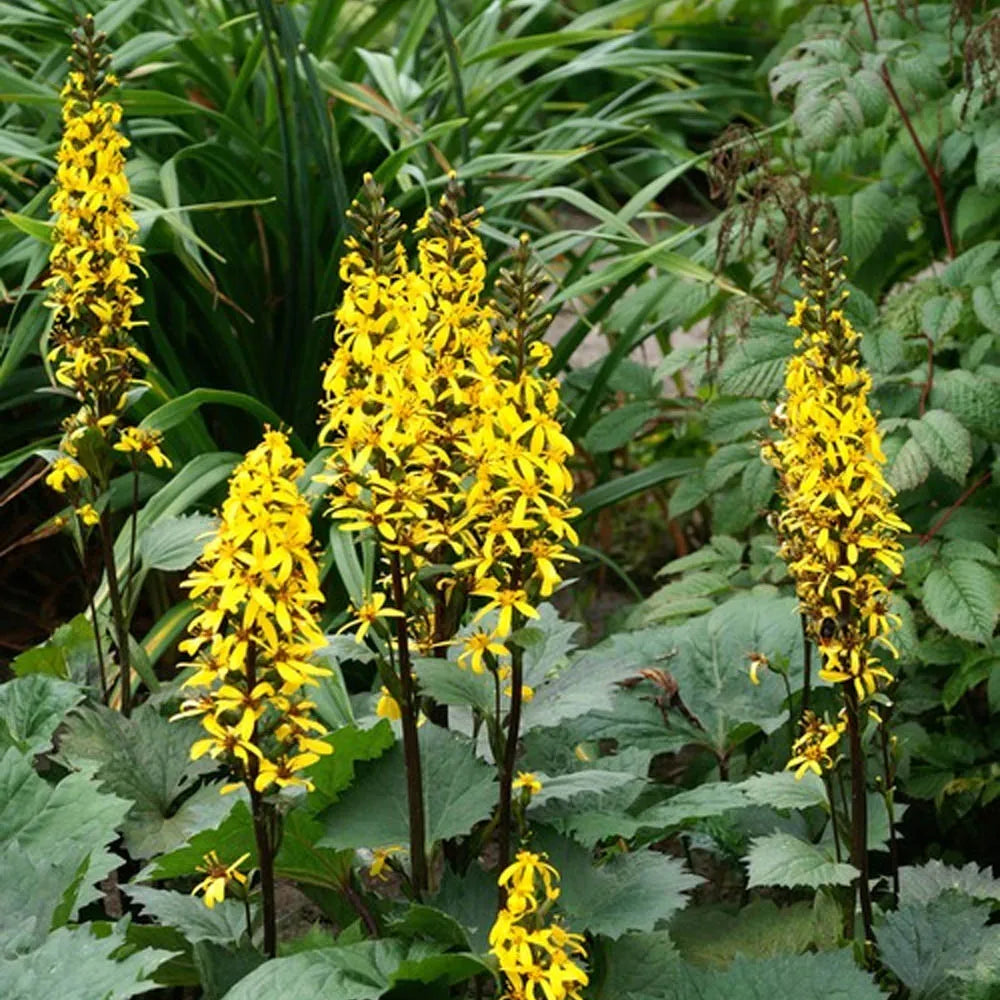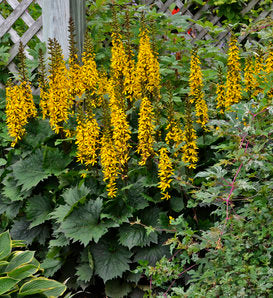Leopard Plant
Couldn't load pickup availability
Description
Leopard Plant: A Stunning Foliage Treasure for Your Garden
The Leopard Plant (Farfugium japonicum), with its large, glossy leaves that often sport stunning spots or patterns, is a showstopper in any garden. Known for its unique foliage and bright yellow daisy-like flowers, the Leopard Plant adds a bold, tropical flair to both garden beds and containers. It is an excellent choice for gardeners looking for a striking and easy-to-care-for perennial that thrives in both shady and moist conditions.
Key Features
- Distinctive, Spotted Foliage: The Leopard Plant is best known for its large, leathery leaves that feature beautiful, dark green patterns often resembling leopard spots or splotches. This striking foliage makes the plant a standout feature in any garden or indoor space.
- Bright Yellow Flowers: In addition to its impressive foliage, the Leopard Plant produces clusters of bright yellow, daisy-like flowers in the fall, which add a cheerful contrast to the plant's dramatic leaves.
- Tolerant of Shade: Unlike many plants, the Leopard Plant thrives in shady areas, making it an ideal choice for gardens with limited sunlight. It can also tolerate moderate sun, especially when planted in well-draining soil.
- Moisture-Loving: The Leopard Plant thrives in moist conditions and is perfect for planting near water features, ponds, or in areas with consistently damp soil. Once established, it is somewhat drought-tolerant, but it prefers consistent moisture to keep its lush foliage thriving.
- Low Maintenance: Known for being easy to care for, the Leopard Plant requires minimal attention once established. It is a great choice for gardeners looking for a plant that will make a big impact without requiring constant upkeep.
Care Instructions
Light
The Leopard Plant prefers partial to full shade, making it an excellent choice for woodland gardens, shaded garden beds, or areas that receive dappled sunlight. While it can tolerate some sun, too much direct sunlight can scorch its leaves.
Watering
This plant enjoys consistently moist soil and requires regular watering, especially during dry periods. However, be sure not to let the soil become waterlogged, as this can lead to root rot. The Leopard Plant can tolerate periods of drought once it is well-established but will perform best with consistent moisture.
Soil
The Leopard Plant prefers rich, well-draining soil that retains moisture but doesn’t stay soggy. It thrives in slightly acidic to neutral soil. Incorporating organic matter into the soil will help it retain moisture and provide nutrients to the plant.
Temperature
Hardy in USDA zones 7–9, the Leopard Plant is best suited to mild to moderate climates. It prefers temperatures between 60°F and 75°F (15°C to 24°C) and can tolerate some colder temperatures in winter if protected. In colder zones, it is often grown as a container plant that can be brought indoors during winter.
Plant Dimensions
- Height: The Leopard Plant typically grows to a height of 12–18 inches, making it suitable for both borders and containers.
- Spread: It spreads 18–24 inches wide, forming a clump of attractive foliage that fills in quickly and creates a lush, tropical look in garden beds.
Why Choose the Leopard Plant?
The Leopard Plant is a perfect choice for gardeners looking to add striking foliage and bright color to shaded or moist garden areas. Its distinctive, spotted leaves and cheerful yellow flowers make it a standout addition to any garden, whether planted in the ground, near water features, or in containers. The plant’s low maintenance needs and ability to thrive in less sunny spots make it an ideal choice for both novice and experienced gardeners. If you’re looking to bring some tropical flair and unique beauty to your landscape, the Leopard Plant is a fantastic option.











